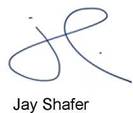GETTING READY TO INSPECT
Before conducting any inspections, get a tetanus shot. After all, you’ll be poking around basements and attics that may have protruding nails and splinters that could break your skin and cause
EXTERIOR
Mortar chimney cap
Flashing Ridge
Valley flashing
Plumbing vent
Gable end
Louver
Corner board Splashboard

infections. Dress the part. Wear sneakers or crepe-soled shoes if you’ll be on ladders or roofs; if you’re crawling around basements and the like, wear heavy-soled boots, and old clothes. Carry a pad of graph paper and a pencil, a flashlight, a pocketknife, a spirit level, and binoculars.
Conduct your inspection alone. You’re after facts, not the opinions of an owner or real estate agent who’s eager to sell. Nor are you now courting the opinions of your partner, who may be eager to buy. If your agent or partner must be present, ask him or her to bring along something to read so you can concentrate on your inspection.
Begin outside, scrutinizing the house methodically, top to bottom. As you see flaws and suspect areas, record them on a sketch of the building. Then go inside and repeat the process, as suggested in this chapter. Finally, as you inspect, look for patterns in what you observe: If there’s water damage at the top of an interior wall or near a window, look outside for worn roofing, missing flashing, and the like. Water will be the cause of many, if not most, problems.
Because water is usually a house’s main enemy, spend time examining the roof—the first line of defense against rain, snow, and ice. Few homeowners would allow a prospective buyer on a sloped roof, whether fearing roof damage or your falling off. Yet even if you’re sure-footed and could obtain permission, it’s probably wiser to stay off. Use your binoculars to take a closer look, unless of course you’ll be inspecting a flat roof.
Sight along the ridge to see if it’s straight. If the ridge sags in the middle, suspect too many layers of roofing or undersize rafters. If the roof sags between rafters, the roof sheathing may be too thin and should be replaced during the next reroofing.
Next, look for flashing at the bases of chimney and plumbing vents. These projections can dam water and allow it to leak through the roof. If flashing is absent, rusty, or otherwise deteriorated, there’s a good chance of water damage.
The valleys between roof sections should be flashed because they carry a lot of water. Thus, where roof planes converge, you’ll see either metal flashing down the valley (an open valley) or interwoven shingles (a closed valley).
Drip-edge is specialized flashing that should protrude from beneath the lowest courses of roofing. It allows water to drip clear of the roof. Older homes lacking drip-edges often suffer water damage because water soaks backward
under sheathing onto the tops of walls (see "Eaves Flashing,” on p. 9).
Wherever roofs adjoin walls or dormer walls, look for roof-to-wall and step flashings, as shown in "Flashing a Shed Roof,” on p. 75. At brick chimneys, consider whether saddle and step flashings are properly counterflashed, as shown in "Chimney Flashing,” on p. 74.






















 Inspecting
Inspecting